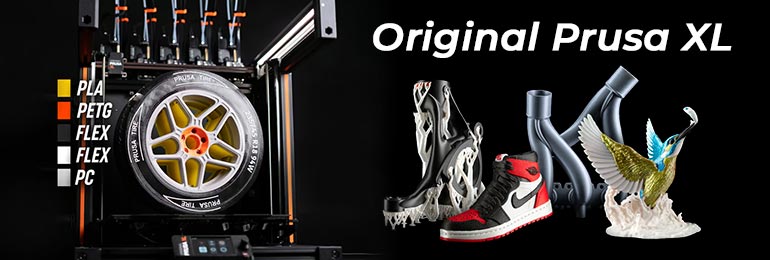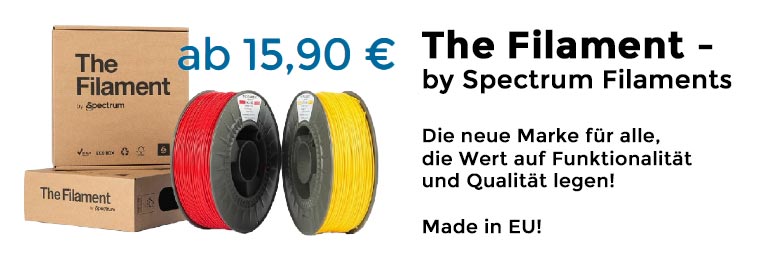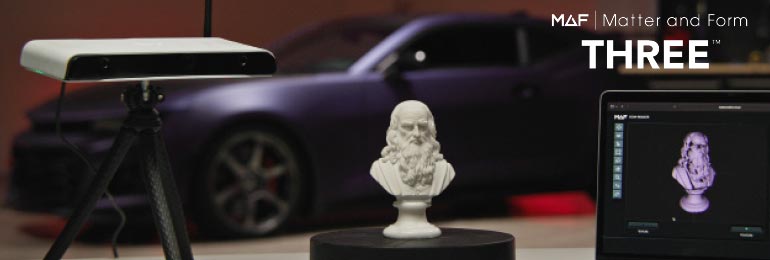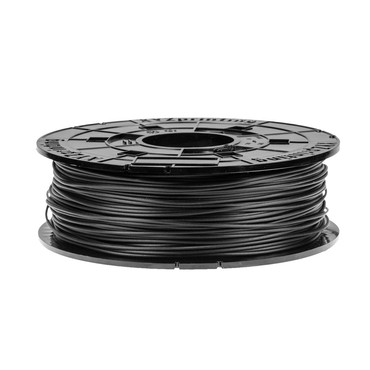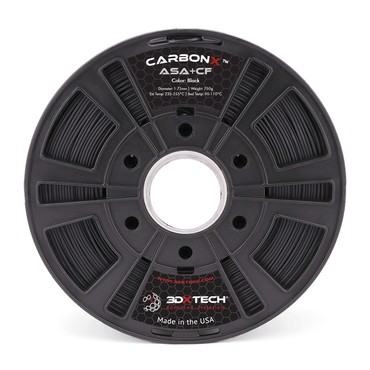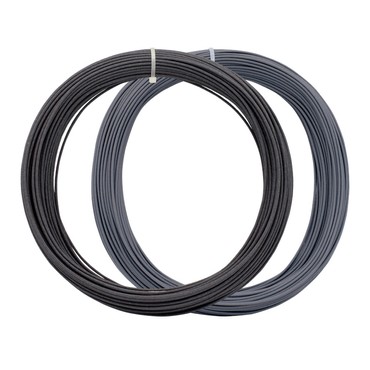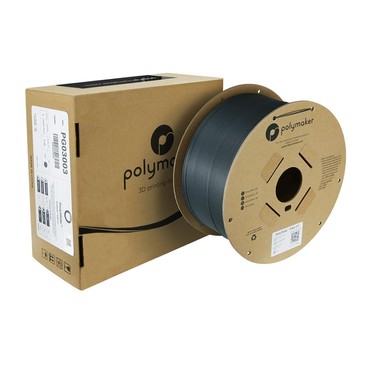Protoplant Carbon Fiber Composite HTPLA hellgrau 1.75mm 50g
hellgrau, dunkelgrau
50g lose oder 500g auf Spule / in 1.75mm und 2.85mm Durchmesser
Proto-Pasta Carbon Fiber Composite HTPLA ist ein carbonfaserverstärktes Hochleistungs-PLA. Diese Kombination ermöglicht sehr viel steifere 3D-Drucke mit einer hervorragenden strukturellen Festigkeit. Die außergewöhnliche Formstabilität resultiert aus einer enormen Schichthaftung bei sehr geringer Verformung. Die Druckobjekte tolerieren Umgebungstemparaturen von bis zu 155 °C (310 ° F). Die reduzierte Flexibilität macht unser Kohlefaser-HTPLA zu einem idealen Material für Rahmen, Stützen, Schalen, Propeller, Werkzeuge ... also alles, was hohe Verwindungssteifigkeit erfordert. Es wird besonders von Drohnenbauern und RC-Hobbyisten geliebt.
Finish
Der eingebettete Carbonanteil sorgt für ein mattes Finish mit edlem Glanz, der bei einer Schichthöhe von 0,1mm die Layerstruktur nahezu verschwinden läßt!
Hardware
Geeignet für alle PLA-kompatiblen Drucker, die Drittanbieterfilamente erlauben. Ein beheizbares Druckbett wird empfohlen, ist aber nicht zwingend erforderlich. Der Drucker sollte mit einer für abrasives Material geeigneten Düse (z.Bsp. Edelstahl) ausgestattet sein. Beachten Sie bitte auch möglichen vorzeitigen Verschleiß von Leitungskomponenten wie Bowdenschläuchen, Antriebsrädern, Düsen und anderen Bauteilen auf dem Filamentweg. Informationen finden Sie in diesem Blogbeitrag. Hier wird der Austausch und die Einstellungen von Düsen an einem Prusa MK3 demonstriert. Reduzieren Sie den Düsenverschleiß, indem Sie Überextrusion und Füllung minimieren.
Erprobte Druckeinstellungenen orientieren sich an typischen Düsen-Sollwerten innerhalb eines weit gefassten Temperaturbereichs. Bei relativ niedrigen Druckgeschwindigkeiten druckt HTPLA gut am unteren Ende des empfohlenen Bereichs. Bei höheren Geschwindigkeiten können höhere Temperaturen als angegeben für eine gleichmäßige Extrusion erforderlich sein. In einigen Fällen macht das Ölen des Filaments den Unterschied zwischen Erfolg und Misserfolg.
Nachbearbeitung
Druckobjekte aus Kohlefaser-HTPLA können mit einer scharfen Klinge nachgearbeitet werden, um ein glattes Finish zu erzielen. Experimentieren Sie für einzigartiges Aussehen mit Verwitterung oder anderen Maltechniken. Die Haftung geklebter Teile ist im Vergleich zu Filament ohne Kohlefaser deutlich höher. Kohlefaser-HTPLA wurde für die Wärmebehandlung (Tempern oder Kristallisieren) zur Verwendung bei höheren Temperaturen entwickelt. Die Wärmebehandlung erzeugt eine kristalline Molekülstruktur, die die Steifheit selbst nahe der Schmelzgrenze aufrechterhält. Durch Kristallisation erzeugte Schrumpfung sollte zum Ausgleich im Slicer vorab skaliert werden.
Materialeigenschaften
- Basis
PLA - Zusatz
10 Gew .-% hochreine, gemahlene Kohlefaser - Partikelgröße
weniger als 150 Mikron (0,15 mm) - Dichte
Ca. 1,30 g / cm³ - Länge (500 g)
180 m (1,75 mm) und 68 m (2,85 mm)
Druckereinstellungen
- Düsentemperatur
205 °C - Heizbett
60 °C - Geschwindigkeit
20-40 mm / s - Düsentyp
verschleißfest für längeren Gebrauch - Düsendurchmesser
0,6 mm oder mehr bevorzugt
